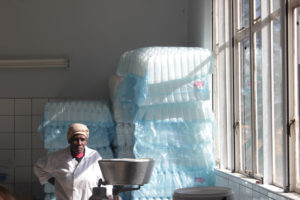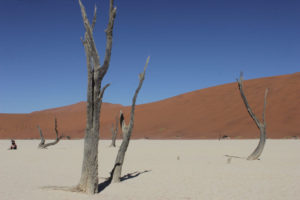Can the world grow without its people stepping on each other’s feet? Looking at the history of the U.S.A., the answer would be no. A demand for spices brought Columbus, ports caused a need for natives to move inward, and when mentioning the word gold, all bets are off. The preservation of people is too easily forgotten when personal needs and wants surface. I believe the U.S., and maybe the world, could learn a lesson from Namibia on how to preserve its people and natural resources.
Namibia, a 26-year old democratic nation is a great model for preservation. Namibia is one of the least dense countries, yet still enjoys growth in agriculture and other resources of the land. Through acknowledgement, education, and land preservation, the young government respects the history and culture of its people while managing to better the nation as a whole.
The first step in the continuation of people is for the government to acknowledge the eleven native tribes. In seeing how different cultures view land, the law has been set so that communal land and farming is possible. The government also works to educate the public so that each group can continue its culture. Public service announcements communicate the need for water preservation and other important messages for the survival as a nation.

A worker at Neudamm campus just outside of Windhoek, Namibia tends to the processing of milk. This old style of agriculture combined with growing technology helps a nation stay rooted in what makes it so special.
Classroom education has a huge effect conservation of people and natural resources alike. Namibia commits one-third of its budget to education. The public university, University of Namibia (UNAM), has a special campus for agricultural education. An entire community using better agricultural techniques can increase their production and decrease resource consumption. One of the biggest issues Namibia faces is that farms fail and the people immigrate to the cities. The change in location and vocation has a negative effect on continuing people’s culture.
Another issue that Namibia combats is lacking revenue. With mineral-rich land, mining has stood as Namibia’s most marketable resource. Mining has also increased, in part, because of the nation’s low population density. Namibia averages about 3 people per square kilometer (PPSK); to compare, the U.S. has around 35 PPSK. Yet, there are always negative effects. A single uranium plant can consume as much as one hundred times the water as a city. Another issue is offers to build nuclear dumps in Namibia. The companies offer millions to create supposedly clean locations for nuclear waste to be deposited. These dumps create a huge danger for the people and natural resources of this beautiful country. An incident could destroy farmland and wild environments alike.

Remnants of trees stand by the Big Daddy dune is Sossusvlei, Namibia. This beautiful location is a tourist haven; yet due to emptiness, desert like this would be plausible for a nuclear waste center.
These dangers also make the country less marketable for tourists. Tourism is quickly growing to become their second most marketable industry. The strongest effect to prevent things that damage these natural resources is the creation of national parks. The U.S.A. is respected by the world for their efforts to save their remarkable landscapes and resources. These huge efforts have resulted in 14 percent of the country being protected in some way by law. Similarly, Namibia is protecting 14.1 percent of its land.
The world has a lot to learn from this young nation. Its first steps were in the right direction; respect people and natural resources alike. An acknowledgement of each distinctive culture, a commitment to education, and an early attempt to preserve important environments has made Namibia a model nation in conservation.